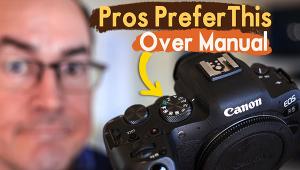Digitally Optimized Zoom Lenses; Do They Really Make A Difference?
All Photos © 2004, Peter K. Burian, All Rights Reserved
As digital SLR cameras have become more affordable the shift to digital capture
has been rapid. Even the most conservative photographers who I know have added
digital SLRs to their systems; others are seriously considering that step. Hence,
it comes as no surprise to see an increasing number of new "digitally
optimized" lenses at every trade show.
While some of the latest lenses are exclusively for use with certain digital
SLR cameras with a small (APS-C) size sensor, many others are in the multi-platform
category. Engineered for superior results with CCD or CMOS sensors, they're
also perfect for 35mm film photography.
Digital Optimization Technology
When reading about lenses optimized for digital cameras, you may wonder why
such lenses were developed and how they differ from their older counterparts.
In order to appreciate all aspects of this issue, it's important to understand
the major differences between film and digital sensors.
Reflectivity: A silicon sensor (and its protective glass cover)
is far more reflective than photographic film. When light reflects from the
almost mirror-like surface, it bounces to the rear lens element. That can create
flare that degrades image contrast and apparent sharpness. In extremely bright
light, internal reflections can also cause "ghosting" (reflections
in the shape of the lens diaphragm), most noticeable when shooting at very wide
apertures.
Light Gathering: The three-dimensional structure of a digital
sensor demands that light strike the entire surface at a 90Þ angle for
the best results. When using conventional lenses with 35mm cameras, the light
strikes the film plane at an increasingly oblique angle, as you move toward
the edge of the image. I wouldn't lose sleep over that, but the problem
is more significant in digital capture particularly with wide angle lenses used
at wide apertures. If less light reaches the pixels at the edges of the sensor,
darkening (shadowing) can occur; edge sharpness may also be lower.
Note: Most camera manufacturers minimize the problem in their
recent digital SLRs with special micro lenses over each pixel. Each company
uses its own proprietary technology, but the intent is similar: to improve the
overall light gathering efficiency. At this time, we don't know whether
that is the perfect solution. Also, it's worth noting that the camera
manufacturers have also developed digitally optimized lenses, although not all
such lenses are labeled accordingly. Olympus has provided the following comment
about their Digital Specific (Zuiko) lenses: An extra group of optical elements
collimates the light so it impinges on the CCD at right angles to its surface
across the entire frame.
 |
|
|
Modified Vs. Conventional Lenses: Every lens manufacturer
uses proprietary digital optimization technology and few have released full
details as to how a particular lens was modified. Independent brand lenses must
be optimized for all brands of digital cameras regardless of the sensor technology
used by each manufacturer. So how do their digitally optimized lenses differ
from older models? The answer to that question is not clear-cut but Sigma and
Tamron employ proprietary technology to solve the various problems they have
identified.
The optical strategies differ from one type of lens to another. An ultra-wide
angle zoom with large maximum apertures requires different modifications than
a telephoto zoom, especially one with small maximum apertures. Some conventional
lenses are already quite suitable for digital cameras. For example, Tamron found
that their existing 90mm macro lens required only new ROM chips and superior
anti-reflection coatings plus a "slight change" in the optical design
to meet the new Di standard. Finally, we can probably assume that a $700 zoom
(of any brand) includes more effective optimization technology than a $199 zoom
with similar focal lengths.
According to a Tamron technical rep, the company employs (unspecified) measures
to increase corner "luminosity" or brightness with many Di lenses.
Most lens manufacturers specify aspherical elements for their wide angle lenses
to correct the angle of light. An increasing number of lenses also incorporate
low dispersion glass elements; according to Tamron, that type of glass, plus
"highly balanced optical instrumentation achieves high contrast in the
low frequency range for higher resolution."
In order to minimize internal flare with any lens, significant anti-reflection
measures are essential. All major manufacturers now use superior chemical coatings
and apply them in multiple layers to more glass surfaces; presumably, that includes
the rear lens element. A Sigma press release for example, states: "We
use the most appropriate coating for digital products to reduce flare and ghosting...and
to produce the best color balance."
Useful For 35mm Cameras: Although the trend to improved optical design was kick-started by the trend to digital capture, everyone can benefit. For example, the super-wide Sigma 12-24mm DG zoom includes three aspherical and four low dispersion glass elements making it highly desirable for film photography. The Tamron wide angle to telephoto 28-300mm Di zoom incorporates several types of elements: four aspherical, two extra refractive index, two anomalous dispersion/aspherical, plus three low dispersion elements. These correct optical aberrations and distortion while optimizing color rendition, useful measures in a lens intended for any type of camera.
 |
|
|
And there's more good news for 35mm format photographers. Because most digital SLRs require extremely short focal lengths for wide angle effects, an increasing number of super wide angle zooms are becoming available. If you want to expand your horizons and are willing to experiment, one of these new multi-platform lenses can open doors to greater creativity.
Optimtimized For Quality?
All of the digital optimization sounds great, but do the new lenses provide
better technical quality? The answer is a qualified "probably."
It's logical to assume that any lens with superior multilayered coatings
and extra high-tech optical elements would be "better." And yet,
as mentioned in previous test reports, a definitive assessment would require
extensive scientific comparison testing in a fully equipped optical lab. There
is one improvement that's clearly visible when comparing the new ultra
wides vs. my old 20-35mm zoom. In digital images, purple fringing around subject
edges (most problematic in backlighting) has been virtually eliminated. Still
not convinced of the value of the digital optimization technology? No problem.
You can find many conventional zooms on photo retailers' shelves.
Lens Tests
We have already published test reports of several multi-platform lenses but
an individual review of every single product would overwhelm even the most avid
enthusiast. Hence, we decided to cover four digitally optimized zooms from Sigma
and Tamron in a single review.
All of the camera manufacturers are optimizing their new lenses for digital
capture. As you might expect, Sigma and Tamron are keeping up with that trend
by expanding their DG ("Digital") and Di ("Digitally integrated")
series. These
multi-platform products are representative of the developments in both brands.
Do note that this report is not based on side by side testing because the four
lenses are quite different in many respects. (How would you compare a 12-24mm
ultra-wide with a 200-500mm telephoto?) During the test period, I worked with
each lens using Canon digital SLRs and occasionally, a conventional EOS camera
loaded with slide film. In order to avoid an "apples to oranges"
comparison, the evaluation of each zoom is based on my expectations from a lens
of that particular type based on extensive past experience.
Sigma Ultra-Wide Angle Zooms
Because wide angle lenses benefit most from digital optimization, the Sigma
DG series includes only short zooms at the time of this writing. The focal length
range starts at 12mm and extends only to 70mm but we expect the company to introduce
longer DG zooms as well. Do note that Sigma makes another line of zooms, designated
as DC ("Digital Camera") exclusively for digital SLR cameras with
an APS-size sensor; some of those lenses are also available for the Olympus
cameras with the smaller "Four-Thirds" sensor. For this report,
I tested two of the multi-platform DG zooms, the shortest and the longest.
 |
|
|
Sigma 12-24mm f/4.5-5.6 EX DG Aspherical: Boasting the shortest
focal length available in a multi-platform zoom, this super wide angle lens
should certainly appeal to landscape and cityscape photographers. For a super
wide zoom, this one is not excessively large or heavy. Like all such lenses,
it was designed to accept only rear-mounted (gel) filters, to prevent the risk
of vignetting (darkening at the corners) by conventional filters. That can be
frustrating for those who want to use a polarizing or ND Grad filter, but I
got fairly good results--at the longer focal lengths--by holding an
oversized polarizer in front of the short (built-in) lens hood.
This super wide Sigma zoom is a fine performer, producing even illumination
across the frame as well as high resolution, clarity, and contrast at any focal
length. Image quality is very respectable at f/4.5 to f/5.6 but improves at
the smaller apertures that we generally use with extremely short focal lengths.
Like any lens, this one produces obvious linear distortion when tilted upward
to include an entire building. That's not caused by an optical flaw. There's
a bit of barrel distortion (bowing outward of lines near the edge of the frame)
but that's noticeable only in formal architectural photography. In my
estimation, this lens will primarily appeal to digital SLR owners who find that
most other zooms simply cannot produce the ultra-wide angle of view they want.
Sigma 17-35mm f/2.8-4 EX DG Aspherical: Offering a more typical range of wide
angle focal lengths, this DG zoom also features wider maximum apertures and
very rugged construction. That's because many photojournalists buy 17-35mm
zooms and they insist on those features. And this lens should certainly entice
anyone who demands pro-caliber performance because of its Special Low Dispersion
glass and two aspherical elements; the combination was designed to correct distortion
and all types of aberrations. As a bonus, this zoom includes a hypersonic (HSM)
motor in some mounts, for silent, ultra-fast autofocus performance.
- Log in or register to post comments

































